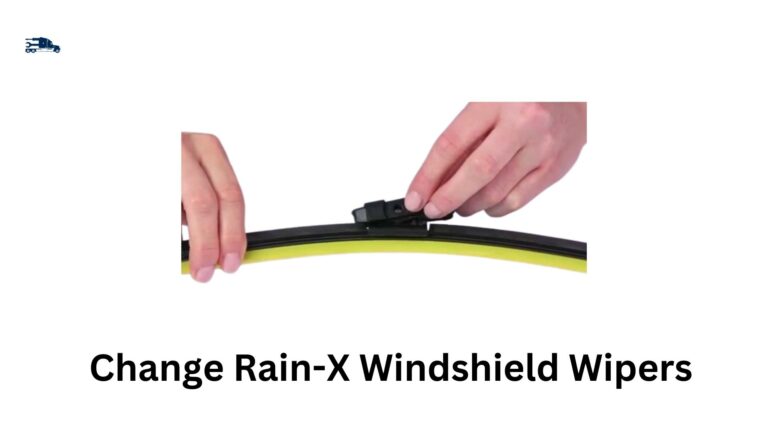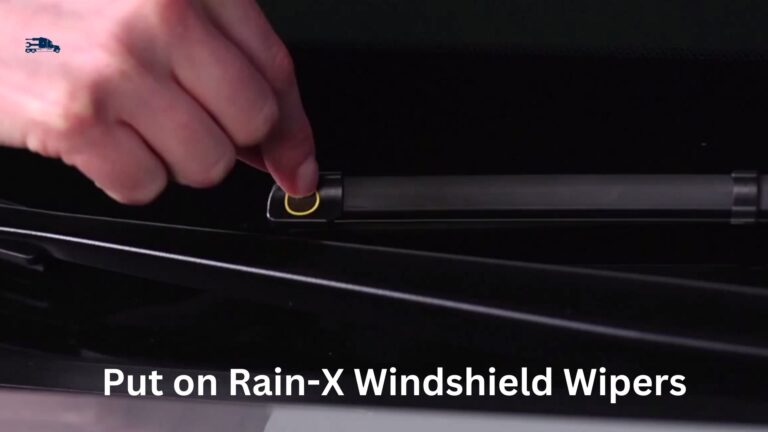Have you ever wondered why it’s crucial to maintain a spotless windshield? Well, buckle up because we’re about to dive into the importance of a clean windshield for safety and visibility. Plus, we’ll explore the wonders of polycarbonate windshields and how they benefit your driving experience.
What Are Polycarbonate Windshields?
Polycarbonate windshields have gained popularity in the automotive industry due to their exceptional durability, impact resistance, and lightweight nature. Let’s take a closer look at what makes polycarbonate windshields a preferred choice for many vehicles.
Polycarbonate windshields are made from a type of thermoplastic polymer known as polycarbonate. This material offers several advantages over traditional glass windshields. Polycarbonate is highly impact-resistant, making it less prone to cracking or shattering upon impact. It is also significantly lighter than glass, improving fuel efficiency and reducing vehicle weight.
How to Clean Polycarbonate Windshield
Before diving into the step-by-step guide on cleaning your polycarbonate windshield, you’ll need a few essential materials to ensure a successful cleaning session. Let’s walk through the process together.
Things You Would Need
To clean your polycarbonate windshield effectively, gather the following materials:
- Microfiber cloth: Opt for a soft and lint-free cloth to avoid scratching the surface.
- Gentle cleaner: Look for a cleaner specifically designed for polycarbonate windshields. Avoid using harsh chemicals or abrasive cleaners that can damage the surface.
- Water: Use clean water for rinsing and diluting the cleaning solution if necessary.
Step-by-Step Guide
Now, let’s proceed with the step-by-step guide to clean your polycarbonate windshield:
1: Preparing the Windshield
Begin by rinsing the windshield with water to remove any loose dirt or debris. This step is essential to prevent scratching the surface during the cleaning process. Gently spray water onto the windshield, ensuring thorough coverage.
2: Choosing the Right Cleaner
Select a gentle cleaner specifically designed for polycarbonate windshields. Avoid using household glass cleaners or harsh chemicals, as they may cause damage. Read the instructions on the cleaner’s packaging and follow them carefully.
3: Cleaning the Windshield:
Dampen a microfiber cloth with the chosen cleaner. Start cleaning the windshield using gentle, circular motions. Avoid applying excessive pressure, as it may cause scratches. Work on small sections at a time, ensuring complete coverage.
4: Rinsing and Drying:
Once you’ve cleaned the entire windshield, rinse it thoroughly with clean water. This step helps remove residue from the cleaner and ensures a streak-free finish. After rinsing, use a dry microfiber cloth to gently dry the windshield, ensuring no water spots or streaks remain.
5: Finishing Touches:
Inspect the windshield for any remaining streaks or marks. Repeat the cleaning process on specific areas until you achieve a crystal-clear finish. Take a step back and admire your sparkling, clean polycarbonate windshield.
Benefits of Polycarbonate Windshields
1. Impact Resistance
One of the primary advantages of polycarbonate windshields is their exceptional impact resistance. They can withstand strong impacts without breaking or shattering, making them an excellent choice for areas prone to hailstorms or road debris. This enhanced durability enhances the safety of both the driver and passengers.
2. Lightweight and Fuel-Efficient
Polycarbonate windshields are considerably lighter than glass windshields, reducing the vehicle’s overall weight. This weight reduction improves fuel efficiency, as the engine doesn’t have to work as hard to propel the vehicle forward. The lighter weight also enhances the vehicle’s handling and maneuverability.
3. Design Flexibility
Polycarbonate is highly moldable, allowing for more intricate and curved windshield designs. This flexibility allows for sleeker and more aerodynamic vehicle designs while maintaining the necessary windshield functionality.
How Can You Make Your Polycarbonate Windshield Last Longer?
Taking proper care of your polycarbonate windshield ensures its cleanliness and helps prolong its lifespan.
Clean Regularly
Regular cleaning is crucial for maintaining the longevity of your polycarbonate windshield. Removing dirt, debris, and contaminants promptly you prevent them from causing scratches or damaging the surface. Follow the step-by-step cleaning guide to ensure a thorough and gentle cleaning process.
Park the Car in Shaded Areas
Exposing your polycarbonate windshield to direct sunlight for prolonged periods can lead to yellowing, hazing, and degradation over time. Parish your car in shaded areas or use a windshield sunshade to protect it from harmful UV rays. This simple step can significantly extend the lifespan of your windshield.
Hard Coat the Shield
Consider applying a hard coating to your polycarbonate windshield. A hard coating acts as a protective layer, guarding against scratches, chemical damage, and UV radiation. It helps maintain the clarity and integrity of the windshield, making it more resistant to wear and tear. Consult a professional or refer to the manufacturer’s guidelines to ensure proper hard coating application.
Polycarbonate Windshields: What Not To Do?
While polycarbonate windshields offer several advantages, it’s essential to be aware of what not to do when it comes to maintenance. Avoiding certain practices can help prevent damage and ensure the longevity of your polycarbonate windshield.
Can You Use Windex on a Polycarbonate Windshield?
Using traditional glass cleaners like Windex on a polycarbonate windshield is not recommended. Glass cleaners often contain ammonia, which can cause damage to the polycarbonate material. Ammonia can lead to discoloration, hazing, and even cracks in the windshield. It’s best to avoid using products that contain ammonia and opt for cleaners specifically designed for polycarbonate surfaces.
Can I Use a Wiper on a Polycarbonate Windshield?
A traditional wiper blade on a polycarbonate windshield can scratch or damage the surface. Wiper blades designed for glass windshields have a harder edge unsuitable for polycarbonate material. These blades can leave scratches, impairing visibility and compromising the windshield’s integrity. Instead, use soft microfiber cloths or specialized polycarbonate-friendly wiper blades to clean your windshield effectively.
Can Polycarbonate Be Cleaned with Alcohol?
Using alcohol-based cleaners on polycarbonate windshields is generally not recommended. While alcohol can effectively remove dirt and grime, it may cause damage to the surface of the polycarbonate. Alcohol can cause discoloration, hazing, or even cracks in the windshield. It’s best to avoid using alcohol-based cleaners and opt for products specifically formulated for polycarbonate surfaces.
Can You Clean Polycarbonate with Vinegar?
Vinegar is a commonly used household cleaning agent, but it is not recommended for cleaning polycarbonate windshields. Similar to alcohol, vinegar can cause damage to the surface of the windshield. It may lead to discoloration or hazing, impairing visibility and compromising the windshield’s integrity. It’s advisable to avoid using vinegar and choose cleaning solutions specifically made for polycarbonate materials.
Maintenance Tips to Keep Your Polycarbonate Windshield Clean
Regular maintenance is essential to keep your polycarbonate windshield clean and in optimal condition. By following a few simple tips, you can ensure its longevity, clarity, and protection against scratches and damage.
Regular Cleaning Schedules and Frequency
Establishing a regular cleaning schedule is key to maintaining a clean polycarbonate windshield. Aim to clean the windshield at least once a week or more frequently if it gets exposed to harsh weather conditions or road debris. Regular cleaning prevents the buildup of dirt, grime, and contaminants, impairing visibility and potentially damaging the windshield.
Protecting from Scratches and Damage
Polycarbonate windshields are more prone to scratches than glass. To protect your windshield, avoid using abrasive materials such as rough sponges, brushes, or paper towels during cleaning. Instead, opt for soft microfiber cloths and gentle cleaning solutions. Additionally, Park your vehicle in shaded areas or use windshield covers to shield it from direct sunlight, as prolonged exposure can cause damage and discoloration.
Maintaining Longevity and Clarity
To maintain the longevity and clarity of your polycarbonate windshield, it’s important to adhere to a few key practices. Avoid using ammonia-based or alcohol-based cleaners, as they can cause hazing or discoloration. Regularly inspect the windshield for any signs of damage, such as cracks or chips, and address them promptly to prevent further issues. Lastly, avoid using windshield wipers meant for glass windshields, as they can scratch or impair the clarity of the polycarbonate material.
Conclusion
Keeping your polycarbonate windshield clean and in optimal condition is crucial for a safe and enjoyable driving experience. By following the right cleaning techniques, using appropriate cleaners, and taking necessary precautions, you can ensure the longevity and clarity of your windshield. Remember these key points:
- Use cleaners specifically formulated for polycarbonate windshields.
- Avoid using household glass cleaners with ammonia or alcohol.
- Clean your windshield regularly, at least once a week.
- Do not use pressure washers to clean your windshield.
- Take special precautions when cleaning tinted polycarbonate windshields.
By incorporating these maintenance tips into your routine, you can enjoy a clean, scratch-free, and clear polycarbonate windshield for years. Drive safely and enjoy the view!


